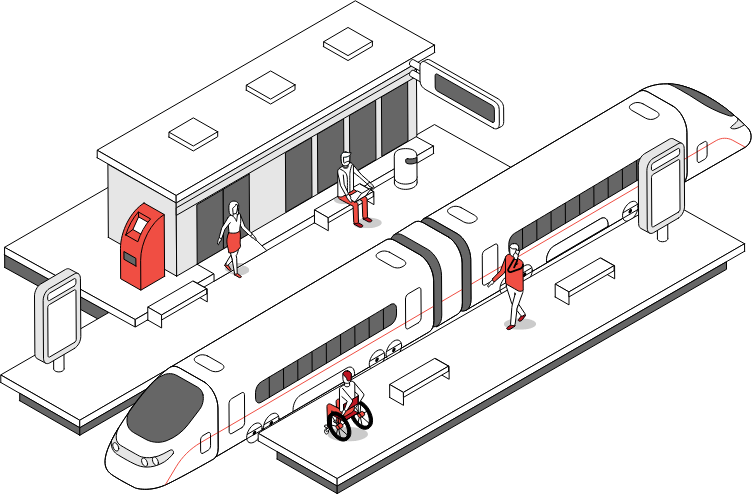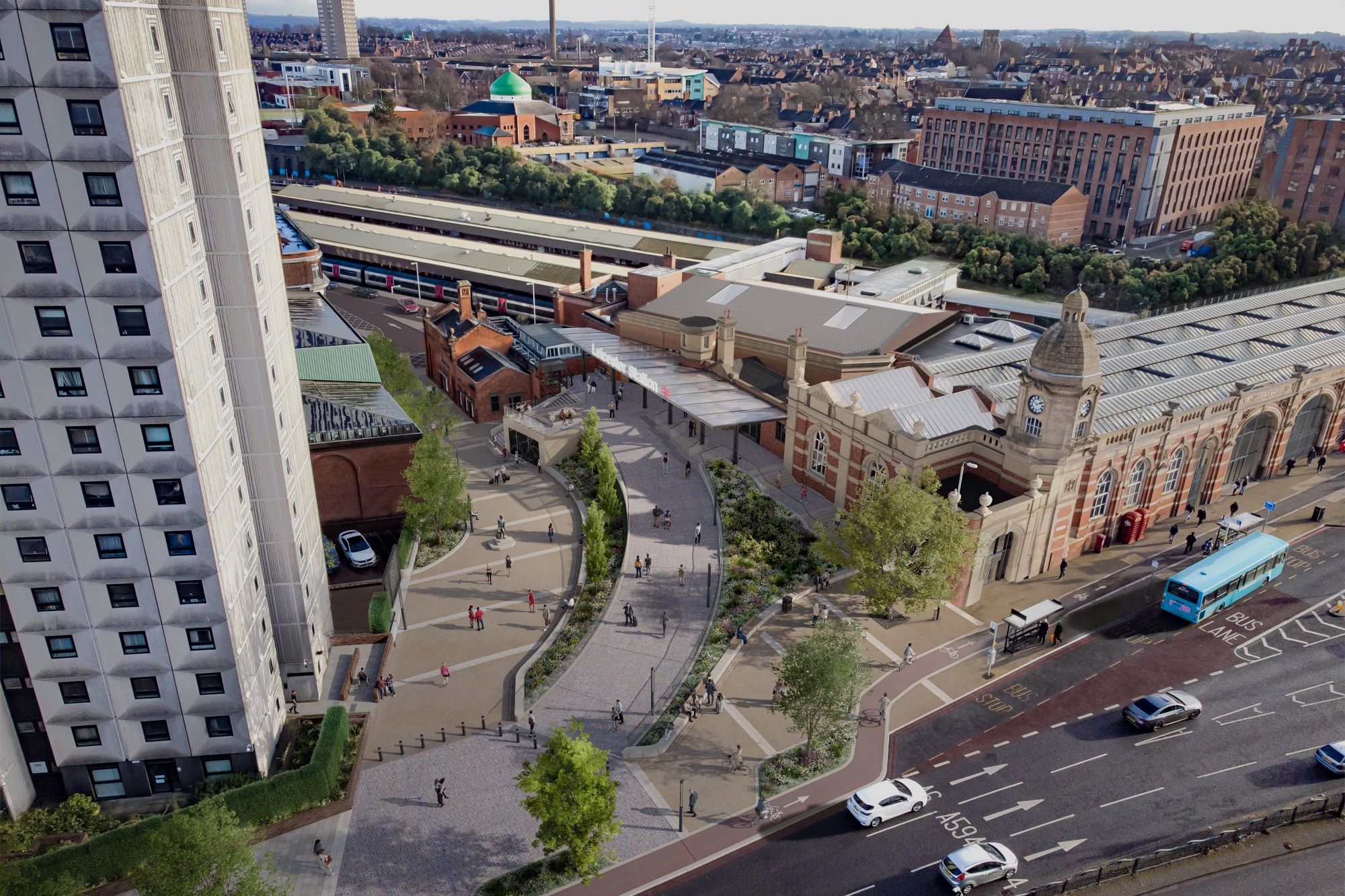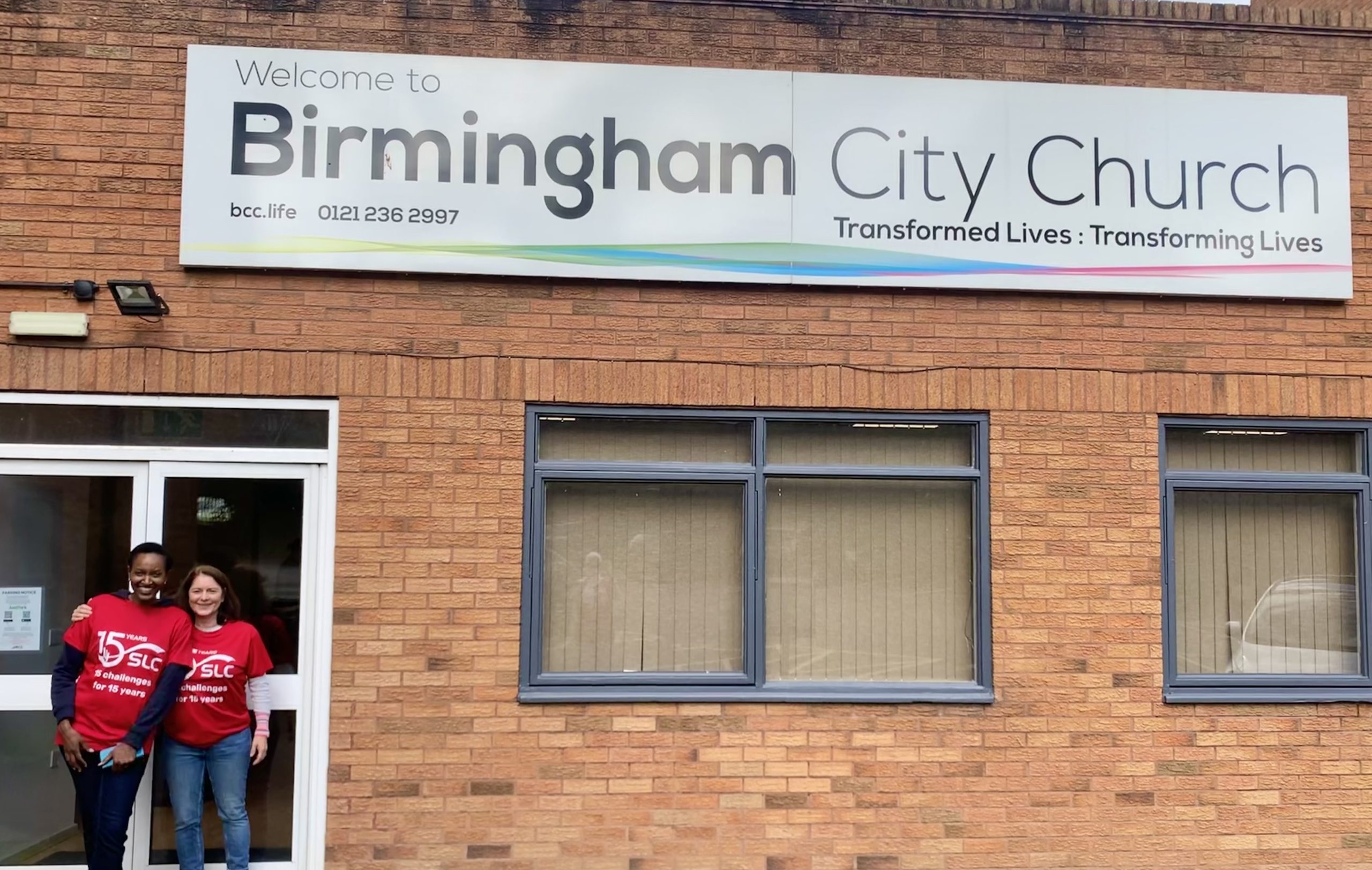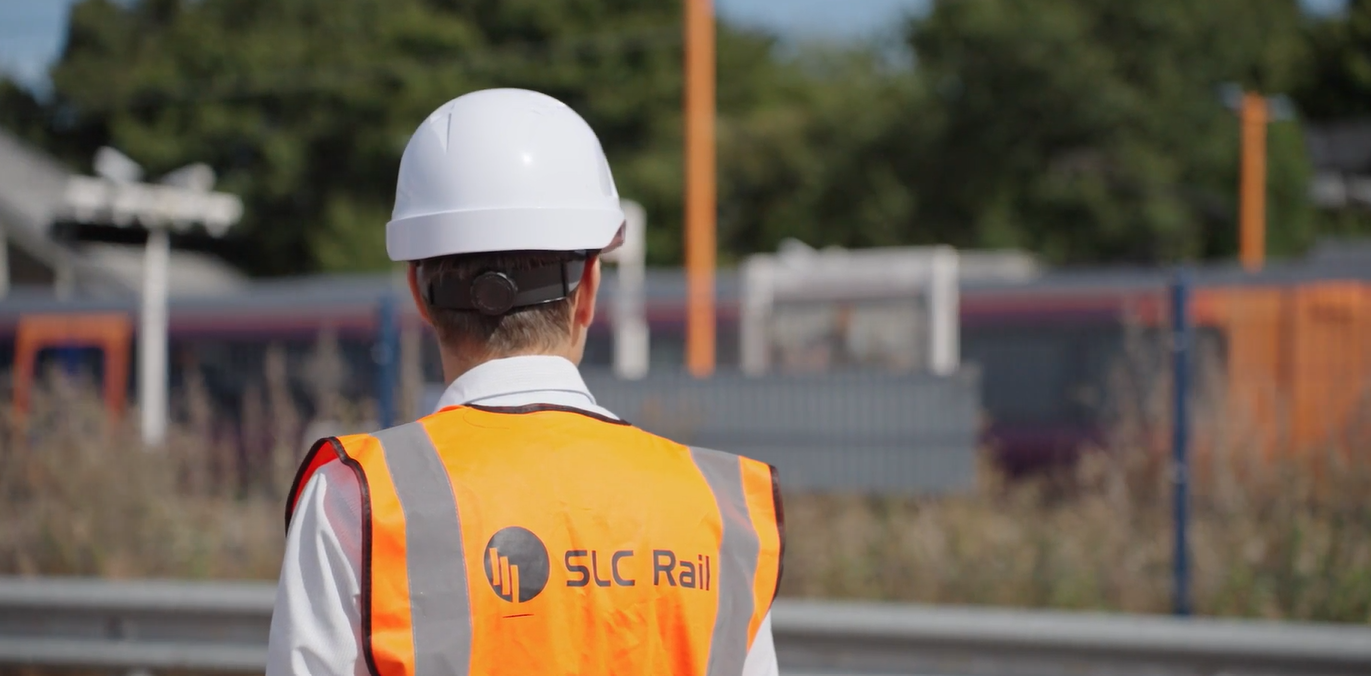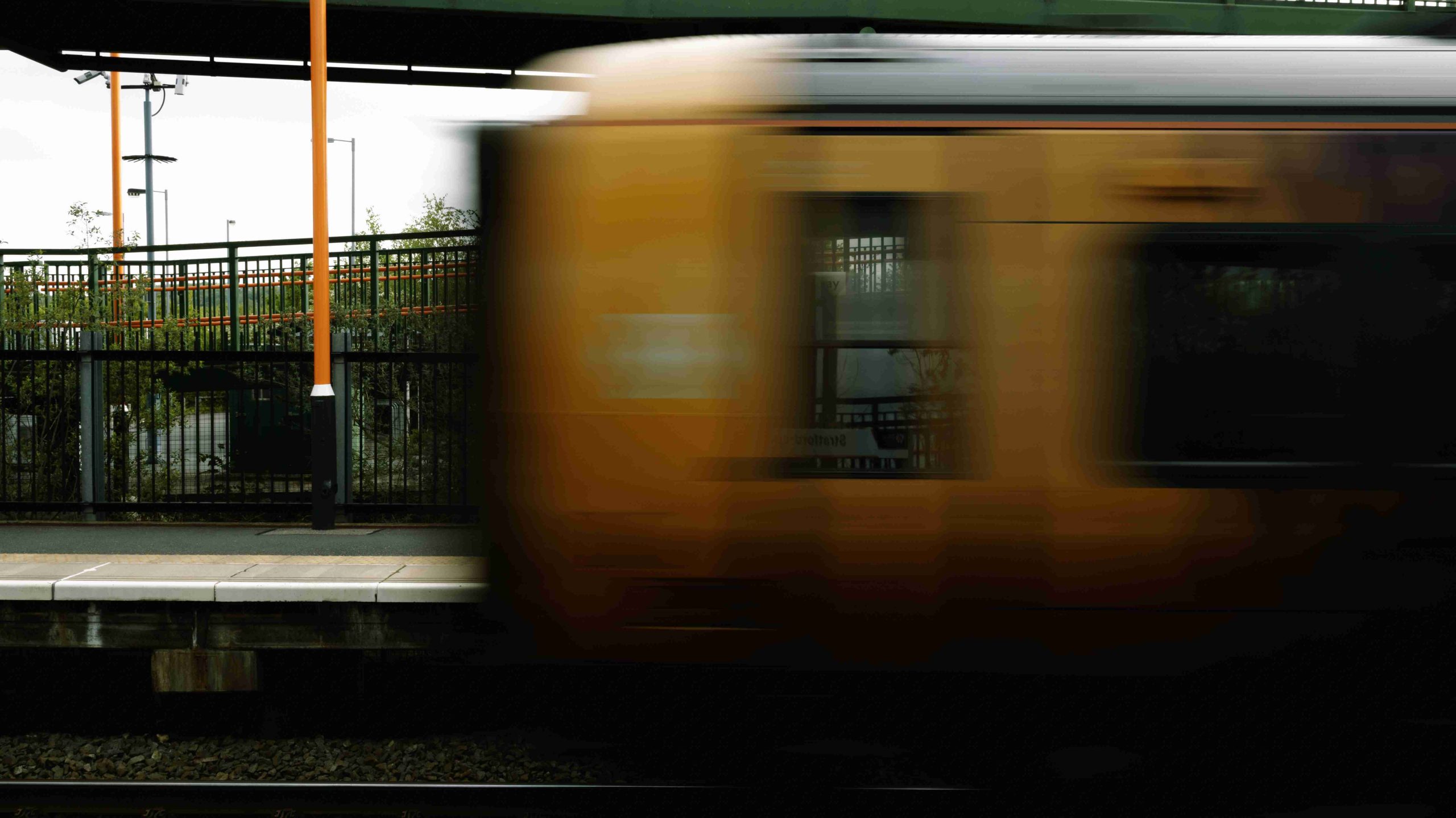The installation of a new canal bridge has marked a major milestone in the £56 million redevelopment of University railway station in Birmingham, which SLC Rail is project managing as part of a joint venture with AECOM.
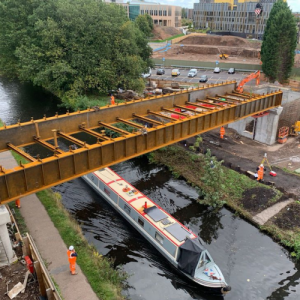
Spanning the Worcester & Birmingham Canal, the bridge links the new station to the University of Birmingham campus and will be crossed by thousands of passengers a day when it opens next summer.
The existing 1970s building, which serves both the University of Birmingham campus and Queen Elizabeth Hospital, is one of the busiest stations in the region. The new building will offer passengers greater capacity and comfort.
Mayor of the West Midlands Andy Street and representatives of partner organisations including Birmingham City Council, the Greater Birmingham and Solihull Local Enterprise Partnership (GBSLEP) and University of Birmingham were among the first to get a close-up look at the new bridge as they toured the site to check progress on construction.
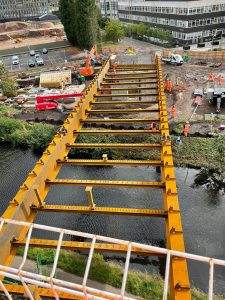
The station buildings are being assembled from a 480-tonne flat pack structure – parts produced off-site and assembled on location to speed up construction. Its huge concrete frame is now complete and brick-effect cladding is now being fitted. The main building is on Vincent Drive and a second smaller building sits between the railway line and canal.
The Mayor said: “Last time I was on site it was an empty plot of land – so I am delighted to see how much progress has been made in just a few months. It really is an impressive achievement that progress has been made so quickly on the new station while the busy Cross City line and existing station are continuing to stay open, with disruption to the travelling public kept to a minimum.
“We all know the current station is stretched well beyond its capacity and isn’t fit for purpose anymore, and so this work will make a real difference to the thousands of commuters that use the station every single day. It is also, of course, part of our wider investment in rail in the West Midlands, with five new stations and two station redevelopments under way and plans for much more to come.”
The building has been constructed from 1,500 square metres of concrete columns, beams and wall sections brought together to form the outer shell of the new buildings. The buildings are supported by foundations made up of 403 concrete columns under the ground.

